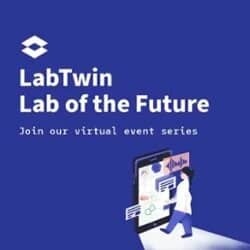Ofer is a postdoctoral fellow in the Department of Bioengineering and Therapeutic Sciences at the University of California, San Francisco (UCSF). He studies the role of short coding and non-coding DNA sequences in normal development and disease pathogenesis. We caught up with Ofer to hear how he uses LabTwin to manage his complex experiments.
Which digital tools do you currently use in your lab work?
In my day-to-day, I use Microsoft OneNote as an ELN (electronic lab notebook). Aside from this, I use Microsoft Office to arrange, present and write up my science. In my dry-lab I use Linux servers, R (RStudio), and python.
How do you currently manage your data?
The short answer is “not as well as I would like”. I use Google Drive to sync all my data and records from my laptop. I’m a bit old fashioned (not by choice) and use a lab notebook for every project, due to a painful past experience with OneNote which resulted in losing 4 months of work.
Why did you decide to join LabTwin’s ambassador program, Twenty Nine?
In my professional life as a molecular geneticist, I tend to become an early adopter of technology which I perceive as game-changing. It happened a couple of times before and when I was introduced to LabTwin‘s ambassador program, I was thrilled with the chance to not only adopt, but also provide input to what I’m sure will become a common tool in labs worldwide over the next couple of years.
What do you like most about LabTwin's voice-activated digital lab assistant?
In addition to a voice in my head reminding me what I have to do next, the voice-activated digital lab assistant supports me in remaining engaged in my sterile work. With LabTwin, I can keep my gloves on and handle hazardous materials while easily keeping track of my progress, next steps, troubleshooting ad-hoc issues, and more.
What workflows and use cases would you like LabTwin to support (e.g. protein extraction, cell culture, qPCR, microscopy)?
For me, dealing with high-throughput screens would be great. I’m looking for an experiment support system, meaning multi-day, many steps, several “stones in the fire” all the time. I need an assistant looking over my shoulder who helps me keep on top of all the details.
I would also like LabTwin to support NGS (next-generation sequencing) library preparation, the most time-consuming task in the project, and therefore the one I need more help with.
What benefits could LabTwin’s digital lab assistant provide researchers in your team or your organization?
In order to have a successful PhD or postdoc, a lot of work is required. Most of the time the work is done in parallel with other activities. Using LabTwin to monitor several protocols in a visual and audio-enabled way will alleviate unnecessary mistakes and increase reproducibility. On the lab and team levels, easy protocol sharing, instant communication and real-time team work will be extremely relevant.
What do you think research labs will look like in 5 years time?
First thing first, labs will adopt a standard SOP for digital data collection and record-keeping. Training for this platform will be mandatory for researchers by the lab/institute/NIH (in the US) prior to starting work on their PhD projects at the bench. The lab space will be paper-less and team-oriented, all based on a synced ELN system. When looking into individual benches, the digital assistance age will be a reality, not just getting the news in the morning but also ordering consumables and reagents and playing music. A proactive virtual assistant will be a digital benchtop companion that will increase individual productivity.
In your opinion, how will an AI and voice-powered product like LabTwin shape the Lab of the Future?
AI and voice-operated products for benchtop scientists in the form of a proactive companion instead of a passive program is a game-changer in my opinion. When working together with equipment software, ELNs, LIMS (laboratory information management systems) and user-customized protocols, LabTwin can make my time at the bench substantially easier and more productive.











